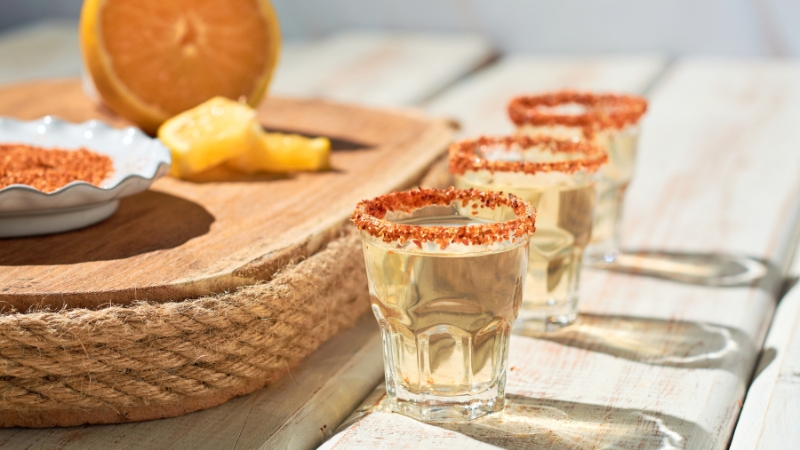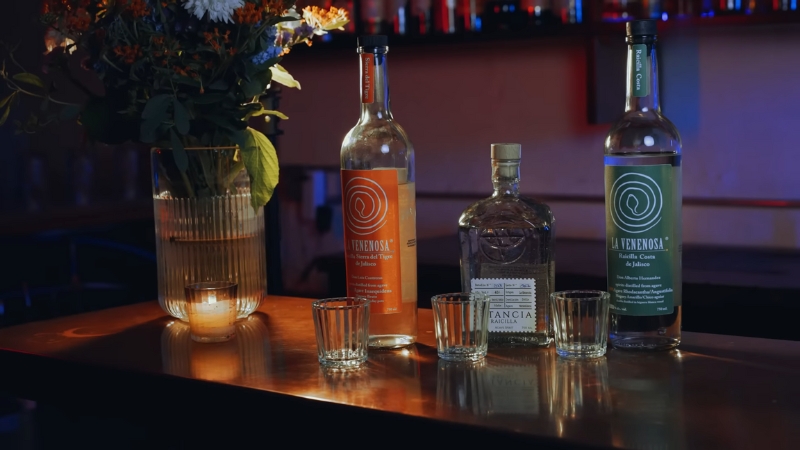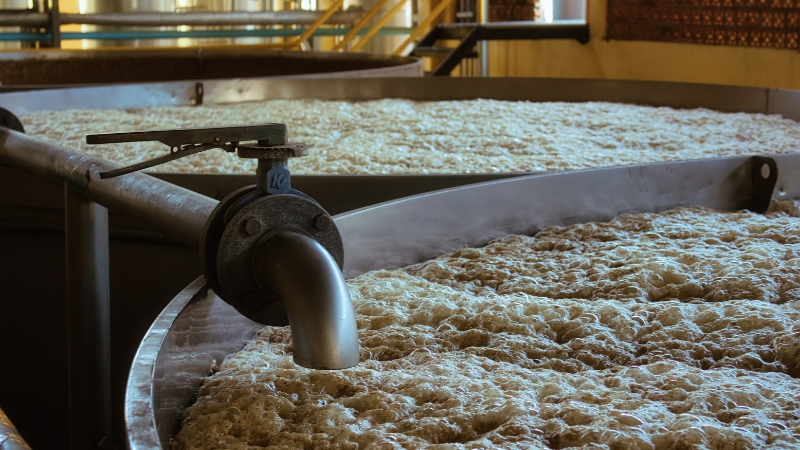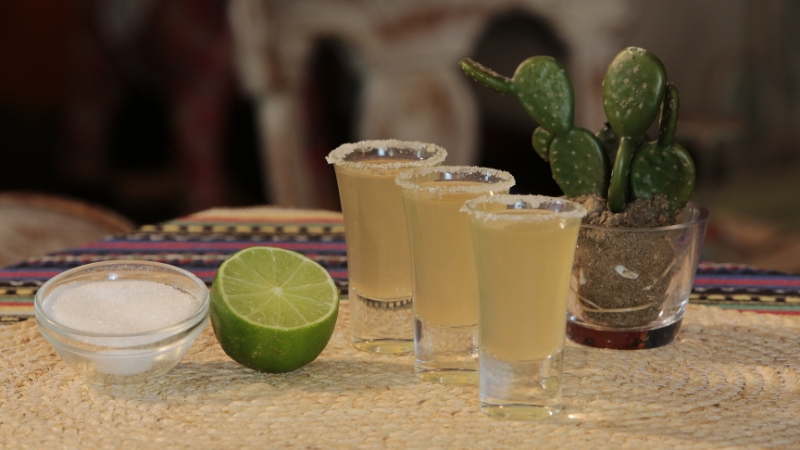Mezcal and raicilla are both distilled spirits made from agave plants in Mexico, but they differ in production regions, agave varieties used, distillation techniques, flavor profiles, and regulatory recognition.
Mezcal is a legally protected Denomination of Origin (DO) spirit that can be produced in multiple Mexican states and can be made from dozens of agave species, with smoky, earthy notes being common.
Raicilla, although historically considered a type of mezcal, is produced mainly in Jalisco and Nayarit from specific agave species, most commonly Agave maximiliana and Agave inaequidens, and has a generally fruitier, more floral character with less smoke.
The two share cultural and artisanal roots but are distinct in terms of regional identity, flavor, and legal classification.
Historical Background

Mezcal has been produced in Mexico for centuries, long before it became a formally recognized DO spirit in the 1990s. It was historically a rural drink, made in small batches by local producers for community consumption, and later gained national and international recognition.
Raicilla has a similarly long history but a different trajectory, originating in the coastal and mountain regions of Jalisco and parts of Naya. Raicillalla was often made outside the mainstream mezcal markets and remained a local specialty until recently gaining its own Denomination of Origin in 2019.
While mezcal production was regulated under national norms earlier, raicilla existed in a more informal, small-scale environment. This meant raicilla retained unique production methods that differ from mainstream mezcal techniques, influencing its flavor profile and cultural identity.
Production Regions
The regions where these spirits are made have a major impact on their characteristics.
Spirit
Denomination of Origin States
Core Production Areas
Mezcal
Oaxaca, Guerrero, Durango, San Luis Potosí, Zacatecas, Puebla, Michoacán, Tamaulipas, Guanajuato
Oaxaca (dominant), Durango highlands, Puebla valleys
Raicilla
Jalisco and Nayarit
Sierra Occidental (mountain) and Costa de Jalisco (coast)
The terroir, climate, soil type, and elevation affect agave growth, sugar content, and ultimately the flavor of the final spirit. Mezcal’s widespread production zones mean there is great variation between regions. Raicilla’s tighter geographic focus gives it a more defined regional identity.
Agave Varieties Used

Spirit
Common Agave Species
Flavor Impact
Mezcal
Agave angustifolia (Espadín), Agave salmiana, Agave cupreata, dozens of wild agaves
Varies from sweet and herbal to earthy and smoky
Raicilla
Agave maximiliana, Agave inaequidens, some Agave rhodacantha
Often fruitier, floral, lighter herbal character
Mezcal’s flexibility in agave choice allows for broad stylistic variation, while raicilla’s reliance on certain wild and semi-cultivated agaves gives it a distinct botanical signature.
Cooking and Roasting Methods
Mezcal is traditionally made by roasting agave hearts (piñas) in underground pits lined with volcanic rock, which imparts a smoky flavor. In some modern facilities, above-ground ovens or autoclaves are used, producing a lighter flavor.
Raicilla producers, depending on the region, often steam-cook the agave in above-ground clay or masonry ovens. This results in less smoke and more emphasis on the raw agave’s natural fruit and floral notes.
Spirit
Typical Cooking Method
Smoke Level in Flavor
Mezcal
Underground earthen pit roast
Medium to high
Raicilla
Above-ground clay or brick oven, sometimes metallic
Low to none
Fermentation and Distillation

Both spirits undergo natural fermentation with wild yeasts, typically in open-air vats. However, fermentation materials can differ: mezcal producers may use wooden vats, stone tanks, or even animal hides in some traditional methods, while raicilla producers often use clay or wood vats.
Distillation is another point of difference:
- Mezcal: Usually distilled in copper or clay stills, depending on tradition and region. Clay still tends to produce a more earthy, mineral character.
- Raicilla: Often distilled in small, homemade stills called “tabernas,” which can be made from a combination of copper, steel, or even Filipino-style stills with hollow tree trunks as condensers, another element that influences its lighter, more aromatic profile.
Flavor Profiles
Flavor differences come from agave species, cooking method, fermentation, and distillation style.
Flavor Aspect
Mezcal
Raicilla
Smoke
Often prominent due to pit roasting
Minimal or none
Body
Medium to full
Light to medium
Primary Notes
Earthy, vegetal, mineral, roasted agave, spice
Fruity, floral, herbal, sometimes tropical
Finish
Long, sometimes smoky and warming
Clean, bright, slightly sweet
In tasting, mezcal tends to have more depth and weight, while raicilla often presents a fresher, more delicate character.
Alcohol Content and Bottling
Both mezcal and raicilla are typically bottled between 38% and 55% ABV, depending on style and intended market. Traditional bottlings for local consumption may be higher proof, often in the 45–50% range, to better preserve flavor intensity.
Regulations require that both are bottled without artificial additives, although flavored or infused versions exist for local markets.
Regulatory Recognition
Mezcal received its DO status in 1994, giving it legal protections similar to tequila. This includes requirements for production zones, agave species, and certified production facilities.
Raicilla’s DO was granted in 2019, making it one of Mexico’s newest protected spirits. This recognition is helping producers access broader markets while preserving traditional methods.
Spirit
DO Year
Governing Body
Mezcal
1994
Consejo Regulador del Mezcal
Raicilla
2019
Consejo Mexicano Promotor de la Raicilla
Cultural Context and Consumption
🇲🇽 Mezcal—Mexico’s smoky spirit, crafted from agave using traditional methods passed down through generations. Explore the art of cultivation and distillation. 🌵🥃https://t.co/rQjeDAosaV
— Inka Larissa (@OnTheSauceAgain) May 4, 2025
In Mexico, mezcal has become a symbol of artisanal craft and rural tradition, celebrated in urban cocktail bars and rural fiestas alike. It is often sipped neat from small clay cups called copitas, with orange slices and sal de gusano (worm salt) on the side.
Raicilla remains more of a regional specialty, tied to specific communities in Jalisco’s mountains and coast. It is also sipped neat, often in social gatherings, and is deeply linked to local agricultural cycles. As raicilla gains recognition, it’s starting to appear in mixology, where its bright, fruity notes work well in cocktails.
Price and Market Availability
In international markets, mezcal is easier to find, with prices ranging widely depending on agave type, production method, and brand reputation. Espadín-based mezcal tends to be more affordable, while wild agave expressions can be significantly more expensive due to scarcity.
Raicilla is less common abroad and often priced higher due to smaller production volumes and export costs. However, its growing recognition could make it more accessible over time.
Spirit
Typical Price Range (US market)
Mezcal
$35 – $100+
Raicilla
$50 – $120+
Choosing Between Mezcal and Raicilla
View this post on Instagram
Your choice comes down to flavor preference and intended use:
- For bold, smoky, earthy complexity: Mezcal
- For fresh, fruity, floral brightness: Raicilla
Both are best appreciated neat at first to understand their profiles, then explored in cocktails where their unique qualities can shine.
Bottom Line
Mezcal and raicilla share common ancestry as agave spirits, but their differences in geography, agave species, cooking and distillation methods, and flavor make them distinct experiences.
Mezcal offers a wider range of styles and smoky depth, while raicilla delivers a fresher, lighter, more aromatic profile rooted in Jalisco and Nayarit traditions. Both are worth exploring for anyone interested in authentic Mexican spirits beyond tequila.

